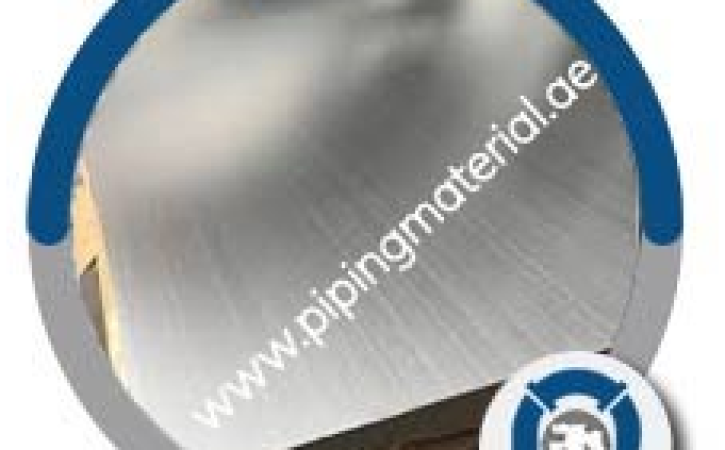
416 stainless steel sheets
Difference between 420 and 416 stainless steel sheets?
The class 420 martensitic stainless-steel plate is renowned for having strong tolerance to corrosion. It is relatively similar to stainless steel of grade 410, however it is stronger and harder. More carbon is present in class 420 as compared to grades 410. Grade 420 has greater resistance to corrosion as compared to grade 410 due to its high carbon compositions.
A martensitic stainless-steel plate exhibiting outstanding machinability and fair durability, 416 plates is a basic linear chromium steel that may be freely machined. Stainless steel sheets of grade 420 have a higher degree of hardness than those in grade 416.
Molybdenum, which is not present in grade 416, is present in stainless steel sheet in grade 420. As contrast to 416 grades, grade 420 also contains a lot of phosphorus and Sulphur. In comparison to grade 420, grade 416 has a higher manganese content.
In grade 420 stainless steel sheet, tin and iron are also present, whereas they are often absent in grade 416. Grade 416 lacks copper while grade 420 contains it. These two grades also differ in terms of their mechanical characteristics. This occurs as a result of the two grades’ distinct elemental makeup.
What is 420 stainless steel sheets typically used for?
There are several uses for alloy 420 where excellent hardness and superior corrosion resistance are required. Many different sectors and purposes use the stainless steel 420 sheets and plates. Stainless Steel 420 Sheets are typically used in the automobile manufacturing business to give the durability and toughness necessary to pass inspection in a collision.
These include petrochemical enterprises, the oil and gas sector, etc. Several industries, including petroleum and chemical refineries, the pharmaceutical companies, and chemical tankers, favored SS 420 Steel because of its qualities that make it corrosion resistant and minimal administration.
Food manufacturing and refrigeration are perfect applications for Stainless Steel 420 strips & plates. Because it is simple to clean, it maintains germs at distant and is employed in the health industry. Therefore, SS420 Plates are the steel product that is in extremely popular due to the many qualities and advantages it possesses.
Knife blades, medical devices, and food production equipment frequently employ it. There are several uses for alloy 420 where excellent hardness and superior corrosion resistance are required. Because it quickly hardens and loses its ability to withstand corrosion at temperatures beyond 800 degrees Fahrenheit (427 degrees Celsius), it is often not utilized at those temperatures.
Is 420 stainless steel surgical grade?
Its features of excellent tolerance to corrosion & toughness make it perfect for its use in medical instruments. Instruments used during dentistry and surgery frequently use type 420. The 420 grade of stainless-steel sheet is also known as surgical steel. Urea, blood, sterilizing agents, carbonic acids, petroleum products, cleansers, diluted nitric acids, steaming, and acid are all provided along with rust resistive.
A regular & clean surface finish typically produces great outcomes. This heat is ideal for tempering to achieve high hardness and enhanced mechanical characteristics. Because it resists corrosion and therefore it is naturally inert, this form of stainless steel is used in surgical instruments.
In reality, it’s a type of stainless steel employed to produce tools for treatment or surgery. Surgical stainless steel seems to be a common term used to refer to medical type stainless steel in the stainless-steel industry. Surgical steel, often known as surgical stainless, lacks a specific definition.
Surgery-grade materials are often “biocompatible,” meaning they won’t cause an immunological reaction when employed inside the organ. This grade cannot be used for implants. When there are significant tensions present and the temperature is below zero, it should be avoided.
Are 416 stainless steel sheets easy to machine?
The capability of stainless-steel grade 416 to be cut (machined) easily and achieve a sufficient finishing at an affordable price is known as machinability. 416 stainless steel sheet are regarded as free-machining steel material. The strongest among all stainless-steel sheet grades, this one has a machinability rating of 85%.
Steel is more machinable after heat processing because it has fewer tensions, a more manageable composition, and a reduced hardness as well as strength. Although it decreases transverse elasticity and toughness, Sulphur enhances machinability. Hardness and strength are the two mechanical characteristics that influence machinability the most.
The typical cutting rate, machined surface, and cutting force gained are taken into account. When calculating a stainless steel 416 sheet machinability rating. One method of improving the 416-sheet machinability is by adding lead to stainless steels. Alloy 416 has reduced frictional characteristics that lessen troubling & clamping and is simple to process.
It is also constantly magnetic. When choosing tool substances, feed rates, cooling systems, cutting lubricants, and machine rates for steel cutting and milling processes, machinability scores are taken into account.
What is the import tax for ss 420 sheet in Bahrain?
This is based on what you purchased. Consequently, there is no way of avoiding paying import duties legally; if the payment is owed, it must be paid.
Bahrain uses the HS code 72 for import taxes on iron and steel. Import duties are subject to a 5% minimum. Depending on the nation the items are purchased from, import taxes and levies may need to be charged in a certain amount. The typical rate of duty tax is 5.63%, ranging from 0 to 37.5%.
Each and every imported sheet of stainless steel 420 is subject to a 10% Goods and Services Tax (GST), which is imposed on the item’s net amount. In the end, any tax owing on an import is the responsibility of the importer.
The total worth of the products is used to calculate the customs duty & charge. Therefore, customs duties could be decreased by declaring a value smaller than the actual cost of the goods. You might be expected to give an import tax, which is a sort of tax imposed by the national government on specific imported commodities.









